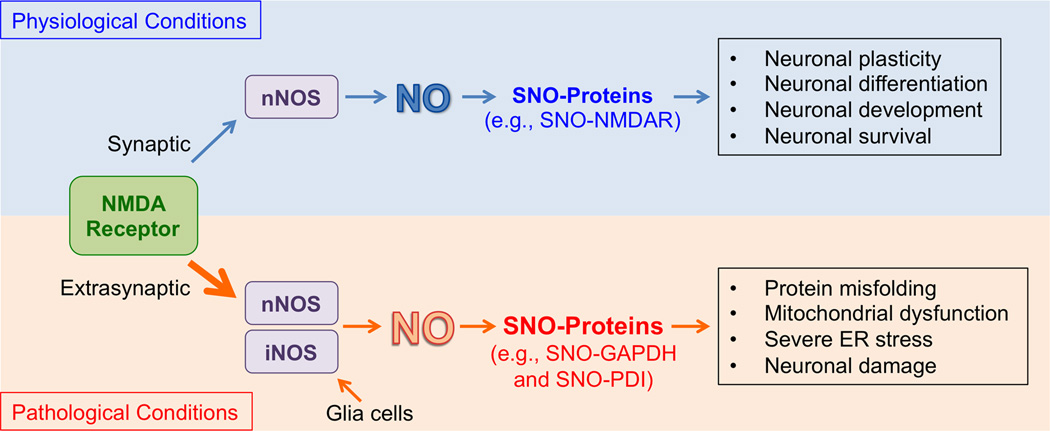Figure 1.
NO/S-nitrosylation signaling under physiological and pathological conditions in the central nervous system. Physiological activation of NMDA receptors localized at synapses triggers calcium influx through the NMDA receptor-associated ion channel and stimulates nNOS tethered to the NMDA receptor protein complex. Physiological (basal) levels of NO thus produced contribute to normal neuronal functions, e.g., via S-nitrosylation of NMDA receptors (SNO-NMDAR) to prevent their overactivation. Under pathological (neurodegenerative) conditions, excessive activation of extrasynaptic the NMDAR-nNOS pathway (or iNOS expression in glia cells) can lead to overproduction of NO. Under these conditions, excessive generation of ROS can also occur. These pathways cause aberrant SNO-protein formation, such as SNO-GAPDH and SNO-PDI, augmenting pathological processes; in some cases nitrosothiol formation is followed by reaction of the same cysteine residue with ROS to form –SOxH adducts (with × = 1–3).

